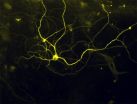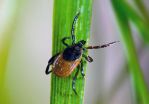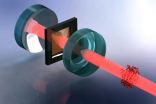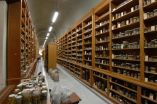INFORMATION:
CONTACT:
B. D. Colen
bd_colen@harvard.edu
617-413-1224
Pain in a dish
Harvard researcher turn skin cells into pain sensing neurons
2014-11-24
(Press-News.org) After more than six years of intensive effort, and repeated failures that made the quest at times seem futile, Harvard Stem Cell Institute (HSCI) researchers at Boston Children's Hospital (BCH) and Harvard's Department of Stem Cell and Regenerative Biology (HSCRB) have successfully converted mouse and human skin cells into pain sensing neurons that respond to a number of stimuli that cause acute and inflammatory pain.
This "disease in a dish" model of pain reception may advance the understanding of different types of pain, identify why individuals differ in their pain responses or risk of developing chronic pain, and make possible the development of improved drugs to treat pain. A report on the work was given advance on-line release today by the journal Nature Neuroscience.
Clifford Woolf, M.D./Ph.D, co-director of HSCI's Nervous Systems Diseases Program lead the research effort. Post doctoral fellows Brian Wainger and Liz Buttermore are first authors on the Nature Neuroscience paper. Woolf's collaborators on the project included Lee Rubin and Kevin Eggan, both professors in HSCRB.
The neuronal pain receptors created by Woolf and his team are reported to respond to both the kind of intense stimuli triggered by a physical injury and that causing "ouch" pain, and the more subtle stimuli triggered by inflammation, which results in pain tenderness, and even by some forms of cancer chemotherapy. The fact that the neurons respond to both the gross and fine forms of stimulation that produce distinct pains in humans provides confirmation that that the neurons are functioning as naturally developed neurons would, Woolf said.
When the project began, Woolf's team was attempting to create pain sensing neurons from embryonic stem cells, but the task proved far more challenging than first envisioned. "We spent three years trying to recapitulate the developmental steps involved, and it turned out to be a total bust," said Woolf, who in addition to his HSCI roles is a Harvard Medical School professor of neurology and neurobiology, and director of the F.M. Kirby Neurobiology Center at BCH. But effort to develop pain sensing neurons was occurring at just the right moment in the evolution of stem cell biology, coinciding with the development of iPS technology, the ability to transform adult human cells into stem cells, and then into other forms of adult cells.
The project was the original effort of a still ongoing collaboration between HSCI researchers and pharmaceutical giant GSK, and, said Woolf, "for the first three years we had nothing to show for all our efforts but they, like us, were in it for the long haul."
Brock Reeve, HSCI's Executive Director, said the pain neuron project "exemplifies the type of long-term collaboration between academia and industry that is critical for advancing basic science and providing new ways to discover drugs."
Describing the early days of the project as "hitting our head against a brick wall," Woolf said that "we had a dogged kind of persistence," and once the team began attempting to create the neurons directly from mouse and human skin cells, everything began to fall into place.
"We took mature pain neurons from mice, and found transcription factors that hadn't been described in them before," the scientist said. Then using a total of five factors - including the three previously undescribed factors - the team was able to transform skin cells directly into the pain sensing neurons.
Asked what kept him pushing through repeated failures to make pain neurons using different approach initially starting with human embryonic stem cells, project leader Clifford Woolf, M.D./Ph.D., said "It's really complicated, because there are many projects I do pull the plug on, when I can't see anyway out of it. "Here, even though we experienced failure constantly, I always felt there was something else we could do that would advance the work. Whether it was worth this long haul, time will tell. I'm optimistic," Woolf said. "I think the ability to make human pain neurons for the pain field is going to be very important. Furthermore, our failure with embryonic stem cells lead us to work with adult tissue samples making the technology much more clinically relevant since these are easy to collect from patients suffering from different kinds of pain", he added.
Woolf noted that the pain sensing neurons his team developed "beautifully model" neuropathies and hypersensitivity to pain experienced by some of the patients who donated skin cells to the project. "Many pain conditions are due to genetic mutations, and we can now model these" Woolf said.
ELSE PRESS RELEASES FROM THIS DATE:
Masking HIV target cells prevents viral transmission in animal model
2014-11-24
Cloaking immune cells with antibodies that block T cell trafficking to the gut can substantially reduce the risk of viral transmission in a non-human primate model of HIV infection, scientists report.
The findings suggest that drugs that are already in clinical trials for inflammatory bowel diseases might be effective in the treatment or prevention of HIV infection.
The results are scheduled for publication in Nature Medicine.
"We were surprised by the effects that we observed," says senior author Aftab Ansari, PhD, professor of pathology and laboratory ...
Animals steal defenses from bacteria
2014-11-24
It's a dog eat dog world, and bacteria have been living in it for a long time. It's of no surprise that bacteria have a sophisticated arsenal to compete with each other for valuable resources in the environment. In 2010, work led by University of Washington Department of Microbiology Associate Professor Joseph Mougous uncovered a weaponry system used in this warfare between bacteria. The combatants inject deadly toxins into rival cells.
Now, in a surprising twist, Mougous and colleagues have found that many animals have taken a page from the bacterial playbook. They steal ...
Global warming cynics unmoved by extreme weather
2014-11-24
EAST LANSING, Mich. --- What will it take to convince skeptics of global warming that the phenomenon is real? Surely, many scientists believe, enough droughts, floods and heat waves will begin to change minds.
But a new study led by a Michigan State University scholar throws cold water on that theory.
Only 35 percent of U.S. citizens believe global warming was the main cause of the abnormally high temperatures during the winter of 2012, Aaron M. McCright and colleagues report in a paper published online today in the journal Nature Climate Change.
"Many people already ...
Cooling with the coldest matter in the world
2014-11-24
Physicists at the University of Basel have developed a new cooling technique for mechanical quantum systems. Using an ultracold atomic gas, the vibrations of a membrane were cooled down to less than 1 degree above absolute zero. This technique may enable novel studies of quantum physics and precision measurement devices, as the researchers report in the journal Nature Nanotechnology.
Ultracold atomic gases are among the coldest objects in existence. Laser beams can be used to trap atoms inside a vacuum chamber and slow down their motion to a crawl, reaching temperatures ...
Italian natural history museums on the verge of collapse?
2014-11-24
Are Italian natural history museums (NHMs) on the verge of collapse? A new analysis published in the open access journal ZooKeys points out that these institutions are facing a critical situation due to progressive loss of scientific relevance, decreasing economic investments and scarcity of personnel.
The study proposes that existing museums associate and collaborate to form a diffused structure, able to better manage their scientific collections and share resources and personnel.
"Italy is universally known for its history, culture, food and art. The list of Italian ...
New method to determine antibiotic resistance fast
2014-11-24
Scientists from Uppsala University, the Science for Life Laboratory (SciLifeLab) in Stockholm and Uppsala University Hospital have developed a new method of rapidly identifying which bacteria are causing an infection and determining whether they are resistant or sensitive to antibiotics. The findings are now being published in the Journal of Clinical Microbiology.
'Clinical use of the method would mean that the right antibiotic treatment could be started straightaway, reducing unnecessary use of antibiotics,' says Professor Dan I. Andersson of Uppsala University, who ...
Cell's skeleton is never still
2014-11-24
HOUSTON - (Nov. 24, 2014) - New computer models that show how microtubules age are the first to match experimental results and help explain the dynamic processes behind an essential component of every living cell, according to Rice University scientists.
The results could help scientists fine-tune medications that manipulate microtubules to treat cancer and other diseases. Rice theoretical biophysicist Anatoly Kolomeisky and postdoctoral researcher Xin Li reported their results in the Journal of Physical Chemistry B.
Microtubules are cylinders made of 13 protein strands ...
Sleep apnea linked to poor aerobic fitness
2014-11-24
People with moderate to severe obstructive sleep apnea may have an intrinsic inability to burn high amounts of oxygen during strenuous aerobic exercise, according to a new study led by researchers at University of California, San Diego School of Medicine.
The study, reported in the current issue of Journal of Clinical Sleep Medicine, shows that people with sleep apnea, in which breathing repeatedly starts and stops during slumber, have a lower peak oxygen uptake during aerobic activity than those who do not suffer from the sleep disorder.
People who suffer from apnea ...
Avoiding ecosystem collapse
2014-11-24
From coral reefs to prairie grasslands, some of the world's most iconic habitats are susceptible to sudden collapse due to seemingly minor events. A classic example: the decimation of kelp forests when a decline of otter predation unleashes urchin population explosions. Three studies published in the Nov. 24 special issue of Philosophical Transactions of the Royal Society Biological Science hold the promise of helping resource managers predict, avoid, and reverse the tipping points that lead to degraded habitats, economic losses, and social upheaval.
The studies are the ...
Has a possible new lead been found in the fight against neurodegenerative diseases?
2014-11-24
Good communication between brain cells is vital for optimal (mental) health. Mutations in the TBC1D24 gene inhibit this process, thereby causing neurodegeneration and epilepsy. Fruit flies with a defect in Skywalker, the fruit fly variant of TBC1D24, are being used as a model for neurodegeneration. Researchers from VIB and KU Leuven have succeeded in completely suppressing neurodegeneration in such fruit flies, by partially inhibiting the breakdown of 'defective' proteins in brain cells.
Patrik Verstreken (VIB/KU Leuven): "These unexpected results offer us a new line ...
LAST 30 PRESS RELEASES:
Eye for trouble: Automated counting for chromosome issues under the microscope
The vast majority of US rivers lack any protections from human activities, new research finds
Ultrasound-responsive in situ antigen "nanocatchers" open a new paradigm for personalized tumor immunotherapy
Environmental “superbugs” in our rivers and soils: new one health review warns of growing antimicrobial resistance crisis
Triple threat in greenhouse farming: how heavy metals, microplastics, and antibiotic resistance genes unite to challenge sustainable food production
Earthworms turn manure into a powerful tool against antibiotic resistance
AI turns water into an early warning network for hidden biological pollutants
Hidden hotspots on “green” plastics: biodegradable and conventional plastics shape very different antibiotic resistance risks in river microbiomes
Engineered biochar enzyme system clears toxic phenolic acids and restores pepper seed germination in continuous cropping soils
Retail therapy fail? Online shopping linked to stress, says study
How well-meaning allies can increase stress for marginalized people
Commercially viable biomanufacturing: designer yeast turns sugar into lucrative chemical 3-HP
Control valve discovered in gut’s plumbing system
George Mason University leads phase 2 clinical trial for pill to help maintain weight loss after GLP-1s
Hop to it: research from Shedd Aquarium tracks conch movement to set new conservation guidance
Weight loss drugs and bariatric surgery improve the body’s fat ‘balance:’ study
The Age of Fishes began with mass death
TB harnesses part of immune defense system to cause infection
Important new source of oxidation in the atmosphere found
A tug-of-war explains a decades-old question about how bacteria swim
Strengthened immune defense against cancer
Engineering the development of the pancreas
The Journal of Nuclear Medicine ahead-of-print tip sheet: Jan. 9, 2026
Mount Sinai researchers help create largest immune cell atlas of bone marrow in multiple myeloma patients
Why it is so hard to get started on an unpleasant task: Scientists identify a “motivation brake”
Body composition changes after bariatric surgery or treatment with GLP-1 receptor agonists
Targeted regulation of abortion providers laws and pregnancies conceived through fertility treatment
Press registration is now open for the 2026 ACMG Annual Clinical Genetics Meeting
Understanding sex-based differences and the role of bone morphogenetic protein signaling in Alzheimer’s disease
Breakthrough in thin-film electrolytes pushes solid oxide fuel cells forward
[Press-News.org] Pain in a dishHarvard researcher turn skin cells into pain sensing neurons





